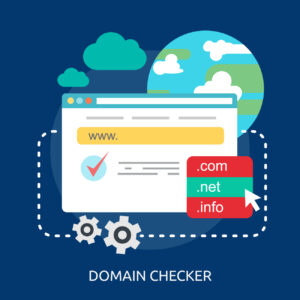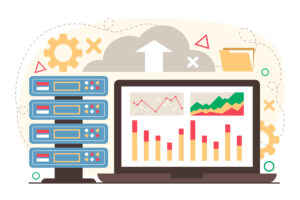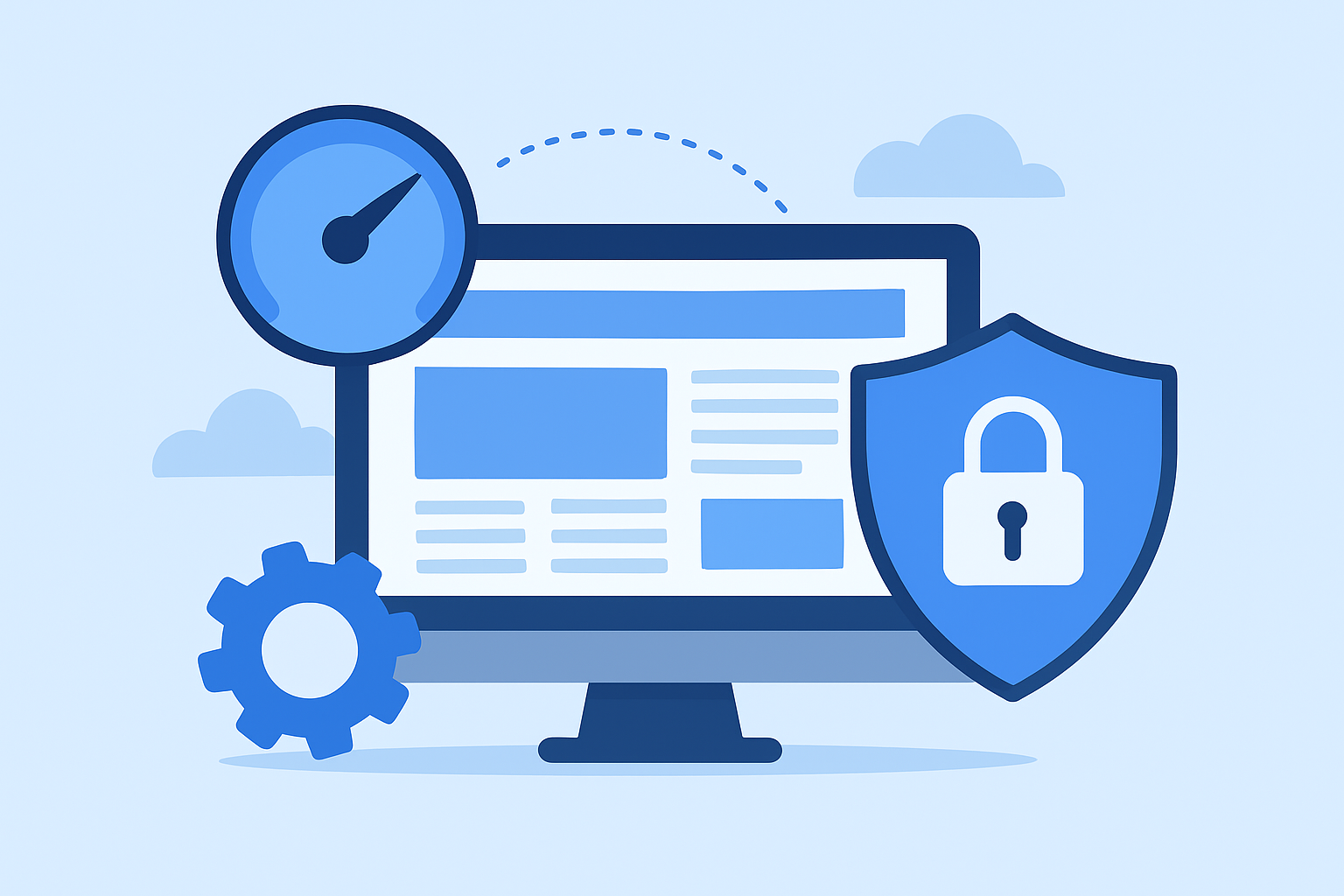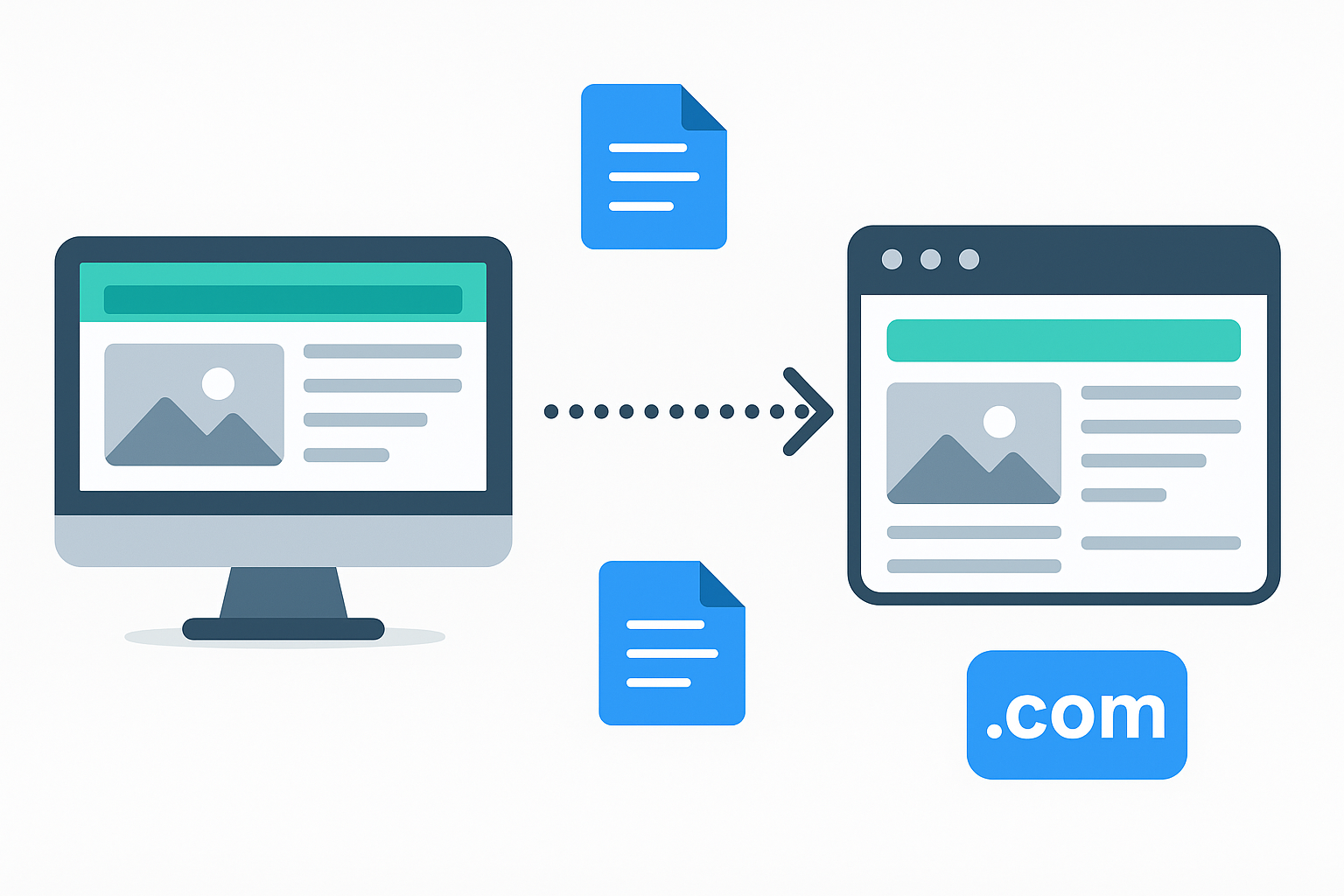Introduction to Website Speed and Performance
In today’s digital landscape, website speed and performance are no longer optional—they are crucial. A slow-loading website not only frustrates users but can also impact your search engine rankings. Visitors expect websites to load instantly, and even a delay of a few seconds can lead to higher bounce rates. Optimizing your website involves several strategies that enhance loading times, responsiveness, and overall performance. At FixHackedSite, we emphasize the importance of speed optimization because it directly correlates with user satisfaction, conversion rates, and SEO success. Performance optimization is a combination of technical improvements, strategic resource management, and continual monitoring. By understanding how different elements affect your site’s speed, you can implement targeted solutions that dramatically improve performance, resulting in a seamless user experience. Every website, whether a blog, e-commerce platform, or corporate portal, can benefit from performance optimization, and the good news is that many techniques are accessible even to beginners. In this guide, we will explore every aspect of website speed optimization, providing actionable strategies to enhance your site’s efficiency and maximize its potential in 2025.
Why Website Speed Matters for SEO and User Experience
Website speed is a key factor for both SEO and user experience. Search engines like Google prioritize websites that load quickly because they provide a better experience for users. Slow websites can negatively affect search engine rankings, reducing visibility and organic traffic. User experience is equally critical—visitors expect instant access to information, and delays can result in lost engagement and conversions. Research shows that even a one-second delay in page load time can reduce conversions by up to 7%. A fast website not only keeps users engaged but also encourages them to explore multiple pages, boosting time-on-site metrics, which further improves SEO signals. Moreover, website speed influences mobile performance, which is increasingly important as mobile users dominate internet traffic. Optimizing speed ensures your website is accessible and functional across all devices. At FixHackedSite, we focus on techniques that enhance speed without compromising quality, including image optimization, caching, and code minification. Prioritizing speed is no longer optional; it is essential for staying competitive, retaining users, and achieving long-term digital success.
Understanding Website Load Time and Its Impact
Website load time is the duration a webpage takes to fully display its content after a user clicks a link or enters the URL. In the modern digital world, where every second counts, fast-loading websites are essential for maintaining user attention and engagement. A website that loads quickly provides a smooth browsing experience, encouraging visitors to explore more pages and interact with the content. Conversely, slow-loading websites often frustrate users, leading to higher bounce rates, reduced engagement, and lost revenue opportunities.
From an SEO perspective, website load time is a critical factor influencing search engine rankings. Search engines such as Google prioritize websites that deliver content efficiently, rewarding fast pages with better visibility in search results. Optimizing website speed involves techniques like compressing images, minimizing JavaScript and CSS files, enabling browser caching, and using reliable hosting services. These improvements not only enhance user experience but also boost search engine performance, attracting more organic traffic.
Beyond user experience and SEO, load time also impacts a website’s credibility and overall brand perception. Users tend to associate slow websites with poor quality, unreliability, or outdated technology. This perception can reduce trust in the brand, ultimately affecting conversion rates and long-term customer loyalty. Moreover, mobile users are particularly sensitive to load times, as mobile networks can sometimes be slower than desktop connections, making optimization even more crucial.
Understanding the full impact of website load time allows businesses and website owners to prioritize speed improvements as a key part of their digital strategy. Regular monitoring, performance analysis, and optimization ensure that a website not only meets user expectations but also competes effectively in search rankings. In conclusion, a fast-loading website enhances user satisfaction, strengthens brand credibility, and drives higher engagement, making it an indispensable element of online success.
How Hosting Affects Website Performance
 Your website’s hosting environment plays a critical role in performance. Poor hosting can lead to slow server response times, frequent downtime, and suboptimal load speeds. Shared hosting, while cost-effective, may compromise performance due to resource sharing with other websites. In contrast, VPS or dedicated hosting provides dedicated resources, ensuring faster response times and improved reliability. Hosting location also matters; servers closer to your audience reduce latency and enhance speed. Modern hosting solutions often include built-in caching, CDNs, and optimization tools that significantly improve website performance. At FixHackedSite, we recommend selecting hosting that aligns with your website’s needs, considering factors like traffic volume, content type, and security requirements. Investing in quality hosting is an essential step for speed optimization, as it forms the foundation upon which other optimization strategies build. By choosing the right hosting, you can ensure consistent, fast-loading pages and a better overall user experience.
Your website’s hosting environment plays a critical role in performance. Poor hosting can lead to slow server response times, frequent downtime, and suboptimal load speeds. Shared hosting, while cost-effective, may compromise performance due to resource sharing with other websites. In contrast, VPS or dedicated hosting provides dedicated resources, ensuring faster response times and improved reliability. Hosting location also matters; servers closer to your audience reduce latency and enhance speed. Modern hosting solutions often include built-in caching, CDNs, and optimization tools that significantly improve website performance. At FixHackedSite, we recommend selecting hosting that aligns with your website’s needs, considering factors like traffic volume, content type, and security requirements. Investing in quality hosting is an essential step for speed optimization, as it forms the foundation upon which other optimization strategies build. By choosing the right hosting, you can ensure consistent, fast-loading pages and a better overall user experience.
The Role of Content Delivery Networks (CDNs) in Speed Optimization
Content Delivery Networks (CDNs) play a crucial role in enhancing website performance and ensuring faster load times for users around the world. A CDN is a network of distributed servers strategically located in various geographical regions, designed to deliver website content more efficiently. By storing cached copies of static assets like images, videos, CSS, and JavaScript files closer to the user’s location, CDNs minimize latency and reduce the distance data must travel, significantly improving page load speed.
Implementing a CDN not only accelerates website performance but also provides a more reliable and consistent user experience. When users access a website, the CDN automatically serves content from the nearest server, decreasing the likelihood of delays caused by traffic congestion or server overload. This is particularly important for global audiences, where visitors from different regions can experience drastically different load times without a CDN in place.
From an SEO perspective, CDNs indirectly contribute to higher search engine rankings. Search engines prioritize websites that load quickly and provide seamless user experiences. By reducing load times, CDNs help improve engagement metrics such as session duration, bounce rate, and conversion rates, all of which can positively influence search rankings.
Additionally, CDNs enhance website security and scalability. Many CDNs include built-in protections against Distributed Denial of Service (DDoS) attacks and sudden traffic spikes, ensuring that websites remain operational and perform optimally even under high demand. This combination of speed optimization, security, and reliability makes CDNs an essential tool for modern websites, e-commerce platforms, and content-heavy portals.
In conclusion, Content Delivery Networks are a key component of website speed optimization. They not only reduce latency and improve load times but also contribute to better SEO performance, enhanced security, and an overall improved user experience. For businesses and website owners aiming to compete in the fast-paced digital landscape, leveraging CDNs is no longer optional but a strategic necessity.
Optimizing Images for Faster Loading
Images are often the largest contributors to slow page load times. Optimizing images involves compressing file sizes without sacrificing quality and using the appropriate file formats such as JPEG, PNG, or WebP. Techniques like lazy loading—where images load only when they appear in the viewport—further improve performance. Additionally, implementing responsive images ensures the browser loads the correct image size for different devices, reducing unnecessary bandwidth usage. At FixHackedSite, we prioritize image optimization as a core speed-enhancing strategy. Tools like TinyPNG, ImageOptim, and built-in WordPress optimizers help reduce file sizes effectively. Optimized images improve load times, reduce bounce rates, and enhance mobile performance. Moreover, faster-loading images contribute to better SEO rankings, as search engines favor websites that deliver content efficiently. By optimizing images, you ensure a visually appealing website that does not compromise speed or performance.
The Importance of Browser Caching
Browser caching is a crucial technique for improving website performance and delivering a faster, smoother user experience. When a visitor accesses a website, their browser stores certain elements of the page, such as images, CSS files, JavaScript, and other static resources, locally on their device. By doing this, the browser can quickly retrieve these files on subsequent visits without having to download them from the server again. This reduces load times, decreases server strain, and ensures that users experience consistent performance across multiple visits.
Implementing browser caching is particularly important for websites with high traffic or content-heavy pages. By storing static assets locally, caching minimizes repetitive data transfers, which not only improves speed but also conserves bandwidth. Faster load times enhance user experience, encouraging visitors to stay longer, engage more, and return in the future. Websites that fail to utilize caching often struggle with slower performance, frustrating users and increasing bounce rates.
From an SEO perspective, browser caching indirectly contributes to higher search engine rankings. Search engines like Google consider page speed as a key ranking factor, and websites that leverage caching typically load faster and provide a smoother user experience. This results in better engagement metrics such as longer session durations, lower bounce rates, and increased page views, all of which positively influence SEO performance.
Additionally, browser caching supports website scalability and reliability. During periods of high traffic, cached files reduce the number of requests the server must handle, preventing slowdowns or potential crashes. It also ensures that users in different geographic locations or with varying network conditions experience similar load times, enhancing accessibility and overall satisfaction.
In conclusion, the importance of browser caching cannot be overstated. By storing frequently accessed resources locally, websites can deliver faster load times, reduce server load, improve user experience, and boost SEO performance. Implementing effective caching strategies is a key step toward building a high-performing, reliable, and user-friendly online presence.
Minifying CSS, JavaScript, and HTML Files
Minification removes unnecessary characters, spaces, and comments from your website’s code, reducing file sizes and improving load times. CSS, JavaScript, and HTML minification is a critical step in optimizing website speed, as smaller files download faster and reduce rendering delays. Tools like UglifyJS, CSSNano, and HTMLMinifier automate this process. Minification also helps eliminate redundant code, improving browser rendering efficiency. At FixHackedSite, we combine minification with file concatenation, reducing the number of requests sent to the server. This technique ensures smoother and quicker page loads, particularly on resource-intensive websites. Proper minification contributes not only to speed improvement but also to better SEO performance, as faster websites receive higher search engine rankings. Overall, minification is a simple yet effective strategy that significantly enhances website efficiency.
Reducing Server Response Time for Better Performance
Server response time refers to the duration the server takes to respond to a browser’s request. A slow response can negatively impact page load time and overall performance. Factors affecting response time include server resources, database efficiency, and web application complexity. To improve server response, you can optimize databases, reduce resource-intensive scripts, and upgrade server hardware or hosting solutions. At FixHackedSite, we monitor server response times using tools like GTmetrix and WebPageTest, identifying bottlenecks that slow performance. Reducing server response time ensures fast content delivery, smoother browsing, and improved user satisfaction. Additionally, it enhances SEO rankings, as search engines prioritize websites that deliver content efficiently. Optimizing server response time is a fundamental step toward creating a high-performing website capable of handling traffic effectively.
Lazy Loading and Its Effect on Page Speed
Lazy loading is a technique where certain elements, such as images and videos, load only when they are visible in the user’s viewport. This reduces initial page load time and saves bandwidth, particularly for media-rich websites. Implementing lazy loading ensures that critical content loads first, allowing users to interact with the site faster. At FixHackedSite, we configure lazy loading for images, videos, and embedded content, improving speed and performance. Lazy loading is especially effective for long-scroll pages, as it prevents unnecessary resource consumption. Beyond speed benefits, it also enhances user experience and contributes to better SEO performance, as search engines favor fast-loading pages. Integrating lazy loading is a modern optimization technique that delivers a seamless browsing experience for visitors on all devices.
Optimizing Database Performance
Optimizing database performance is a critical aspect of maintaining a fast, efficient, and reliable website. Databases are the backbone of dynamic websites, storing vital information such as user data, product catalogs, transaction records, and content. When a database operates inefficiently, it can slow down query responses, delay page load times, and negatively impact overall user experience. Therefore, ensuring optimal database performance is essential for both website speed and functionality.
 One of the key strategies for database optimization is indexing. Proper indexing allows the database to quickly locate and retrieve the requested data without scanning entire tables, significantly reducing query execution time. Regularly analyzing and optimizing queries is also important, as poorly written queries can create bottlenecks and increase server load. Database normalization, while maintaining a balance to avoid excessive complexity, helps eliminate redundancy and improves data organization, further enhancing performance.
One of the key strategies for database optimization is indexing. Proper indexing allows the database to quickly locate and retrieve the requested data without scanning entire tables, significantly reducing query execution time. Regularly analyzing and optimizing queries is also important, as poorly written queries can create bottlenecks and increase server load. Database normalization, while maintaining a balance to avoid excessive complexity, helps eliminate redundancy and improves data organization, further enhancing performance.
Additionally, database caching plays a vital role in speed optimization. By storing frequently accessed data in temporary memory, caching reduces the need for repeated database queries, leading to faster page loads and reduced server stress. Proper database maintenance, such as cleaning up obsolete data, optimizing tables, and monitoring performance metrics, ensures that the database continues to function efficiently even as the website grows.
For high-traffic websites, scaling the database through methods such as replication, sharding, or using a distributed database system can prevent slowdowns during peak times. Choosing the right database technology—whether SQL, NoSQL, or a hybrid solution—based on the website’s needs also contributes significantly to performance optimization.
In conclusion, optimizing database performance is essential for creating fast, responsive, and reliable websites. By implementing indexing, query optimization, caching, regular maintenance, and appropriate scaling strategies, website owners can ensure that their databases support a seamless user experience, improve load times, and maintain high levels of performance and reliability in the competitive online environment.
The Impact of Plugins on Website Speed
Plugins extend functionality but can also negatively affect website speed if poorly coded or excessive in number. Every plugin adds additional scripts, CSS files, and database queries, which can slow page load times. At FixHackedSite, we perform plugin audits to identify resource-heavy or redundant plugins. Solutions include replacing slow plugins with lightweight alternatives, merging functions where possible, or removing unnecessary plugins altogether. Reducing plugin load not only enhances speed but also improves security, as outdated or vulnerable plugins are common attack vectors. Website owners often underestimate how much plugins affect performance; even a single poorly optimized plugin can degrade speed significantly. By managing plugins strategically, you maintain robust functionality without sacrificing efficiency, ensuring that your website delivers fast, reliable performance and a seamless user experience. This optimization step directly contributes to higher SEO rankings and better user retention.
Monitoring Website Speed Using Tools
Continuous monitoring of website speed is essential to maintain optimal performance. Tools like Google PageSpeed Insights, GTmetrix, Pingdom, and WebPageTest provide insights into page load times, bottlenecks, and recommendations for improvement. At FixHackedSite, we regularly analyze these reports to track performance trends and identify areas needing optimization. Monitoring allows you to catch issues early, such as slow-loading scripts, large media files, or server inefficiencies. These tools also provide mobile and desktop performance scores, enabling targeted optimization for different devices. By integrating regular speed audits into your website maintenance routine, you ensure consistent performance improvements. Moreover, monitoring informs strategic decisions, helping prioritize optimization efforts that have the highest impact on speed and user experience. Continuous performance tracking is a cornerstone of professional website management, keeping your site fast, efficient, and competitive in search results.
Mobile Optimization and Speed
With mobile users dominating internet traffic, mobile speed optimization is crucial. Mobile devices often face slower connections, limited processing power, and smaller screen sizes, making efficient optimization a priority. Techniques such as responsive design, compressed images, adaptive content, and reduced JavaScript execution enhance mobile performance. At FixHackedSite, we ensure websites are mobile-friendly while maintaining fast load times. Google also prioritizes mobile-first indexing, meaning that mobile speed directly influences SEO rankings. Mobile-optimized websites improve user engagement, reduce bounce rates, and enhance conversion rates. Focusing on mobile speed is not just a technical improvement; it is a strategic investment in user experience, accessibility, and search visibility, ensuring your website performs excellently across all devices and connection types.
Advanced Techniques: Gzip Compression and HTTP/2
Gzip compression and HTTP/2 are advanced techniques that play a pivotal role in optimizing website speed and enhancing overall performance. Gzip compression reduces the size of files sent from the server to the user’s browser, including HTML, CSS, and JavaScript files. By compressing these files, websites can significantly decrease page load times, as smaller files require less bandwidth and are delivered more quickly to users. Enabling Gzip on a server is relatively simple and provides immediate improvements in website responsiveness, especially for content-heavy pages with large scripts or media assets.
On the other hand, HTTP/2 is a modern protocol designed to improve how data is transferred between servers and browsers. Unlike its predecessor HTTP/1.1, HTTP/2 allows multiple requests and responses to be sent simultaneously over a single connection, reducing latency and enhancing efficiency. This multiplexing capability ensures that resources such as images, scripts, and stylesheets are loaded in parallel, significantly speeding up page rendering. Additionally, HTTP/2 supports header compression and server push features, which further optimize performance by reducing overhead and proactively sending required resources to the browser before they are requested.
Implementing Gzip compression and HTTP/2 together creates a powerful combination for website speed optimization. Gzip ensures that transferred files are as small as possible, while HTTP/2 ensures they are delivered efficiently and simultaneously. Websites leveraging these technologies provide faster load times, improved user experience, and lower bounce rates. Furthermore, search engines favor websites with optimized speed, which can positively impact rankings and visibility.
In conclusion, advanced techniques like Gzip compression and HTTP/2 are essential for modern website performance optimization. They not only reduce load times and improve resource delivery but also enhance reliability and responsiveness, ensuring that users experience seamless, fast, and efficient browsing across all devices and network conditions.
Improving User Experience Through Speed Optimization
User experience (UX) is directly influenced by website speed, making speed optimization a fundamental aspect of web design and development. Visitors expect websites to load quickly, and even small delays can lead to frustration, reduced engagement, and higher bounce rates. A fast-loading website ensures that users can access content, navigate pages, and interact with features seamlessly, creating a positive impression that encourages them to stay longer and return in the future.
Optimizing speed improves overall usability by minimizing waiting times and enhancing the responsiveness of interactive elements. When pages load efficiently, users can complete tasks such as form submissions, online purchases, or content exploration without interruptions. This seamless experience not only increases user satisfaction but also strengthens trust and credibility, as visitors perceive the website as professional and reliable. Mobile users, in particular, benefit from speed optimization, as slower networks can exaggerate delays, making performance improvements even more crucial for a growing mobile audience.
 Speed optimization also contributes to better accessibility. Websites that load faster accommodate a wider range of users, including those with limited bandwidth or older devices. Techniques such as compressing images, enabling browser caching, minimizing scripts, and leveraging Content Delivery Networks (CDNs) ensure that content is delivered quickly and consistently to all users, regardless of their device or location.
Speed optimization also contributes to better accessibility. Websites that load faster accommodate a wider range of users, including those with limited bandwidth or older devices. Techniques such as compressing images, enabling browser caching, minimizing scripts, and leveraging Content Delivery Networks (CDNs) ensure that content is delivered quickly and consistently to all users, regardless of their device or location.
Furthermore, fast-loading websites positively impact user behavior and engagement metrics, which indirectly support SEO and online visibility. Reduced bounce rates, longer session durations, and higher interaction rates signal to search engines that the website offers a valuable and efficient user experience, potentially improving rankings and driving more organic traffic.
In conclusion, improving user experience through speed optimization is essential for maintaining engagement, satisfaction, and trust. By prioritizing fast load times and smooth interactions, website owners can deliver a superior browsing experience that benefits both users and business performance, ensuring long-term success in a competitive digital environment.
Common Mistakes That Slow Down Your Website
Many websites unknowingly suffer from common speed issues that hinder performance. These include unoptimized images, excessive plugins, large CSS/JS files, outdated themes, and poor hosting. Ignoring these factors can drastically increase load times, negatively impacting SEO and user engagement. At FixHackedSite, we conduct comprehensive audits to identify and fix these mistakes. Even minor adjustments, like enabling caching, removing unused code, and optimizing media, can significantly improve performance. Avoiding common pitfalls ensures your website remains fast, secure, and user-friendly, enhancing both traffic and conversions. Recognizing and correcting these mistakes is essential for maintaining long-term website efficiency and competitiveness in 2025.
Conclusion: Take Action to Speed Up Your Website
Speeding up and optimizing your website is a critical step for digital success. From server performance and caching to image optimization, lazy loading, and advanced techniques like HTTP/2, every improvement contributes to faster load times and enhanced user experience. At FixHackedSite, we help businesses implement these strategies effectively, ensuring websites are high-performing, secure, and optimized for search engines. A fast website not only improves SEO rankings and user retention but also builds credibility and trust with visitors. Remember, optimization is not a one-time task—it requires ongoing monitoring and refinement. By taking proactive steps, you can create a website that excels in speed, functionality, and usability, keeping visitors engaged and supporting your business growth. Start implementing these strategies today and experience the transformative impact of a truly optimized website speed.



